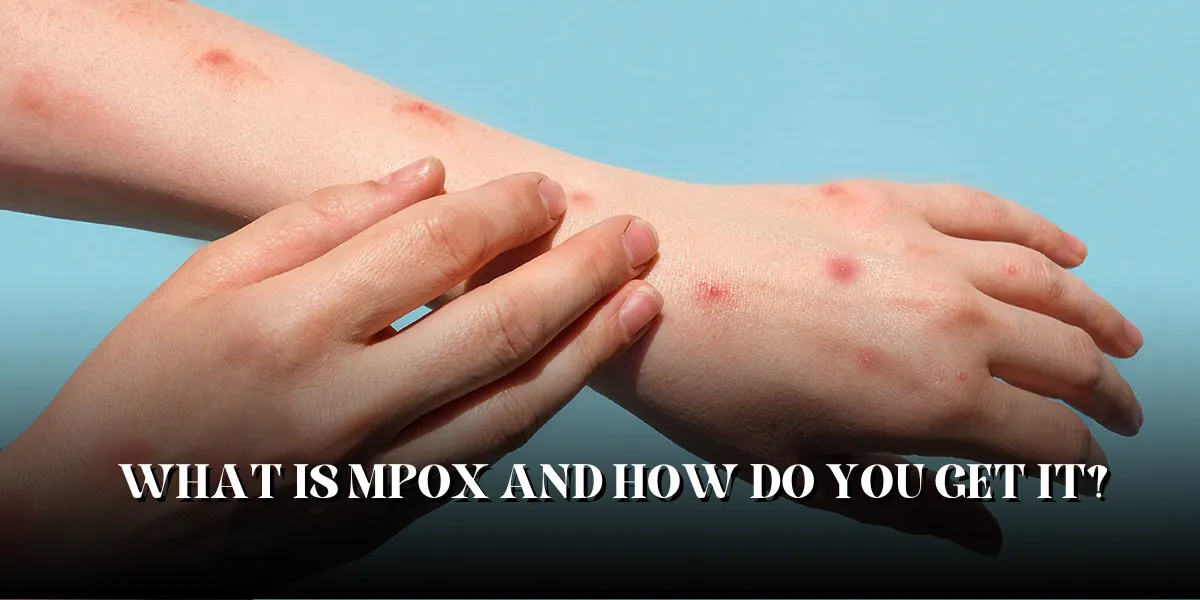
What is Mpox and How Do You Get It?
Understanding Mpox: A Comprehensive Guide
Mpox, previously known as monkeypox, is an emerging viral infection that has gained attention due to its resemblance to smallpox, though it is generally less severe. This virus belongs to the orthopoxvirus family, the same group that includes smallpox, and primarily affects humans and certain animals. The symptoms can range from flu-like conditions to more severe manifestations like a painful rash. While the disease might seem alarming, having a solid understanding of its transmission, symptoms, and preventive measures can empower you to protect yourself and your community.
What is Mpox?
Mpox is a zoonotic viral infection, meaning it can be transmitted from animals to humans. First identified in monkeys, hence the original name “monkeypox,” it is now understood to spread primarily through human-to-human contact. The virus can cause a variety of symptoms, some mild and others more severe, and it typically runs its course within a few weeks. However, certain individuals, particularly those with weakened immune systems, may experience more significant complications.
How Does Mpox Spread?
The transmission of Mpox occurs in several ways, all of which involve close contact. Understanding these pathways is crucial in preventing the spread of the virus.
Direct Contact with Infected Individuals
The most common method of mpox transmission is through direct contact with the rash, scabs, or bodily fluids of an infected person. This can happen through skin-to-skin contact, which is why individuals who engage in close physical contact with someone exhibiting symptoms are at the highest risk.
Respiratory Droplets
Although less common, mpox can also spread through large respiratory droplets. This mode of transmission typically requires prolonged face-to-face contact, such as during conversations or close personal interactions. It’s important to note that respiratory droplet transmission is more likely when someone is in close proximity to an infected person for an extended period.
Contact with Contaminated Objects
Mpox can survive on surfaces and objects, making it possible for the virus to spread through contact with items such as bedding, towels, or clothing that have been used by an infected individual. This indirect contact route emphasizes the importance of proper hygiene and cleanliness in environments where the virus may be present.
Animal-to-Human Transmission
In certain regions, mpox can spread from infected animals to humans. This typically occurs through bites, scratches, or direct contact with the blood, body fluids, or rash of an infected animal. Rodents and other small mammals are known carriers of the virus, particularly in areas where the virus is endemic.
Recognizing the Symptoms of Mpox
The symptoms of mpox typically appear within 3 to 17 days after exposure to the virus. The early signs are often flu-like and can be mistaken for other common illnesses, making awareness of the full spectrum of symptoms essential for early detection.
Initial Symptoms
- Fever: One of the first symptoms to appear, often accompanied by chills.
- Headache: Persistent and often severe.
- Muscle Aches and Backache: Generalized pain that can be debilitating.
- Swollen Lymph Nodes: Unlike some other viral infections, mpox often causes significant lymph node swelling, which can help distinguish it from similar illnesses.
- Fatigue: A general sense of exhaustion, sometimes severe enough to interfere with daily activities.
Progression of the Disease: The Rash
After the initial symptoms, typically within 1 to 5 days, a rash begins to develop. This rash is one of the hallmark signs of mpox and progresses through several stages:
- Flat Lesions (Macules): The rash starts as flat, discolored patches on the skin.
- Raised Bumps (Papules): These lesions then evolve into raised bumps.
- Pustules: The bumps fill with pus, becoming pustules, which can be quite painful.
- Crusting and Scabbing: Eventually, the pustules crust over, forming scabs that will later fall off as the skin heals.
This rash can appear anywhere on the body but is most often found on the face, hands, and feet. In severe cases, it can cover large areas of the body and cause significant discomfort.
Who is at Risk?
While anyone can contract mpox, certain groups are at higher risk of exposure and severe outcomes.
Close Contacts of Infected Individuals
Individuals who have had close physical contact with someone infected with mpox are at the highest risk. This includes family members, partners, and healthcare workers who may be caring for infected patients.
Healthcare Workers
Healthcare workers are at an increased risk, particularly if they are working in areas where mpox is more prevalent. Proper use of personal protective equipment (PPE) and adherence to infection control protocols are essential in these settings.
People in Endemic Regions
In regions where mpox is more common, individuals who interact with potentially infected animals or who live in communities with known cases are at an elevated risk.
How is Mpox Diagnosed?
A combination of laboratory tests and clinical evaluation is used to diagnose mpox.
Clinical Evaluation
A healthcare provider will begin by assessing your symptoms and reviewing your medical and travel history. Given the similarity of mpox to other pox-like illnesses, a thorough physical examination, particularly of the rash, is crucial.
Laboratory Testing
To confirm a diagnosis of mpox, a sample from the rash (such as a swab or a biopsy) will be tested in a laboratory. PCR (Polymerase Chain Reaction) testing is typically used to detect the presence of the virus. This test is highly specific and can distinguish mpox from other viral infections.
Treatment Options for Mpox
There is no specific antiviral treatment approved for mpox, but the symptoms can be managed with supportive care.
Symptomatic Treatment
- Pain Relief: Over-the-counter pain relievers such as ibuprofen or acetaminophen can help alleviate fever and muscle aches.
- Hydration: Hydration: It’s important to stay hydrated, particularly if a fever is present.
- Rest: Ample rest is essential to support the body’s immune response.
Severe Cases
In more severe cases, hospitalization may be necessary, especially for individuals with complications such as secondary bacterial infections or respiratory issues. In these cases, treatment will focus on managing complications and providing supportive care.
Preventing Mpox: What You Need to Know
Preventing mpox involves a combination of personal hygiene practices, avoiding contact with infected individuals, and taking precautions in areas where the virus is prevalent.
Avoid Close Contact with Infected Individuals
One of the most effective ways to prevent mpox is to avoid close physical contact with anyone who has a rash or other symptoms consistent with mpox.
Practice Good Hygiene
Regular handwashing with soap and water is a simple yet effective way to reduce the risk of infection. Alcohol-based hand sanitizers can be used when soap and water are not available.
Avoid Contact with Wild Animals
In regions where mpox is common, it’s important to avoid contact with wild animals, particularly rodents and other small mammals that may carry the virus.
Safe S…al Practices
Practicing safe s-x, including the use of condoms, can reduce the risk of transmission, especially if there is any concern about potential exposure to the virus.
Conclusion
Mpox is a serious viral infection that requires awareness and proactive measures to prevent its spread. By understanding the ways in which mpox is transmitted, recognizing its symptoms, and taking steps to protect yourself and others, you can significantly reduce your risk of infection. If you suspect you may have been exposed to mpox or are experiencing symptoms, it’s important to seek medical advice promptly.

